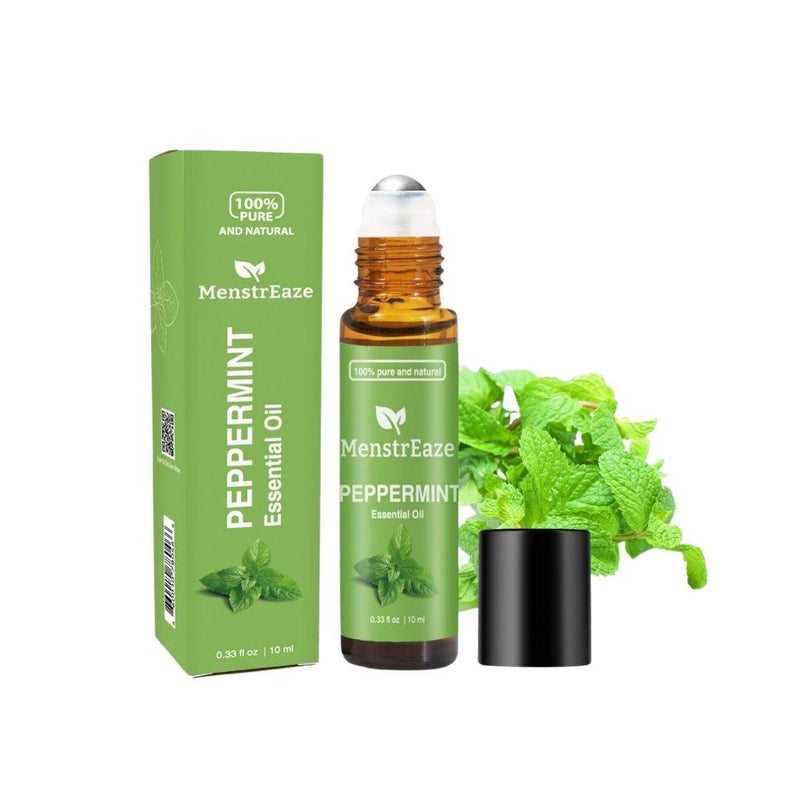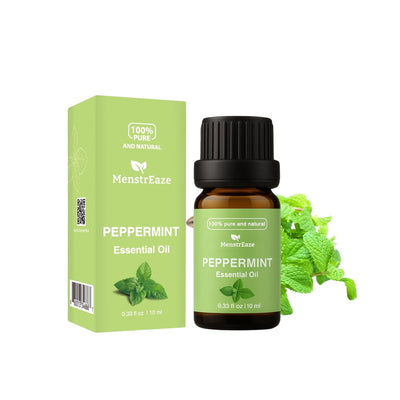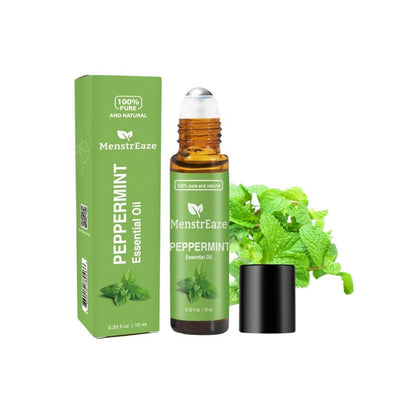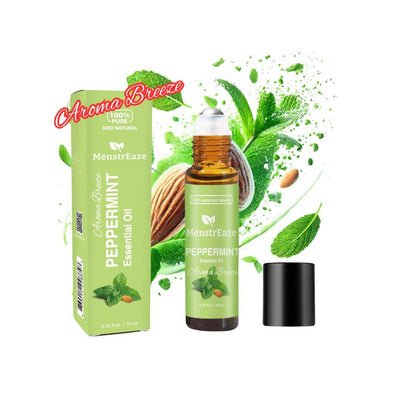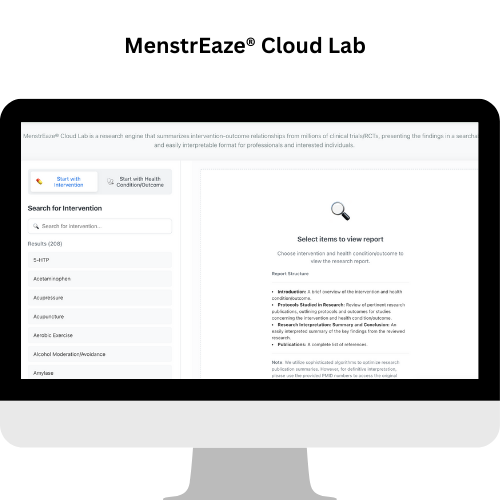Are you experiencing common hair concerns such as an itchy scalp, frustrating dryness, or even the subtle signs of hair thinning? Many people seek natural alternatives to support their hair and scalp health. Among the myriad of natural remedies, peppermint essential oil for hair has emerged as a compelling option, lauded for its refreshing properties and potential to invigorate the scalp. This powerful essential oil, derived from the Mentha piperita plant, boasts a key component called menthol, known for its distinct cooling sensation and stimulating effects.
In this comprehensive guide, we will explore how peppermint essential oil can serve as a valuable addition to your hair care regimen. We’ll delve into its potential benefits, from stimulating blood circulation to the scalp and energizing hair follicles to alleviating dryness and itching. Most importantly, you will learn how to make peppermint oil for hair growth safely and effectively, whether through dilution in a carrier oil or by incorporating it into your favorite shampoo.
Understanding Peppermint Essential Oil: More Than Just a Scent
Peppermint essential oil (PEO) is a concentrated extract obtained through steam distillation of the peppermint plant's leaves and flowering tops. While widely recognized for its invigorating aroma and use in aromatherapy, its therapeutic properties extend far beyond scent. The star component in peppermint essential oil is menthol, which is responsible for the characteristic cooling and tingling sensation it imparts upon contact with the skin.
When applied to the scalp, this menthol content interacts with the skin's nerve endings, creating a sensation that can feel both refreshing and stimulating. This stimulation is believed to play a crucial role in its potential benefits for scalp health and hair growth. Understanding this core mechanism is key to appreciating why PEO is gaining traction in the world of natural hair care, offering a unique approach to addressing various scalp concerns and supporting a robust environment for hair to thrive.
Is Peppermint Oil Good for Hair? Exploring Its Benefits
The question, is peppermint oil good for hair, is increasingly being asked by those looking for natural hair care solutions. The answer, based on emerging research and anecdotal evidence, points to several promising benefits for both scalp health and hair vitality. Its unique properties make it a standout ingredient for those aiming to improve their hair's condition from the roots up.
A. Stimulating Scalp Circulation and Hair Growth
One of the most significant potential benefits of peppermint essential oil for hair lies in its ability to stimulate blood flow to the scalp. The menthol in peppermint oil is a vasodilator, meaning it can help widen blood vessels. When applied topically, this effect can lead to increased circulation in the scalp area. Enhanced blood flow is vital because it ensures that hair follicles receive a richer supply of oxygen, nutrients, and vitamins necessary for healthy hair production. This invigorated environment can help to energize dormant or weakened hair follicles, promoting a healthier growth cycle.
Early studies, such as one conducted on mice, have shown promising results, indicating that peppermint oil could induce a rapid anagen (growth) stage in hair follicles. This research observed significant increases in dermal thickness, follicle number, and follicle depth in the group treated with peppermint oil [2]. Furthermore, peppermint oil has been noted as a potential natural alternative for addressing conditions like androgenetic alopecia, highlighting its role in supporting hair growth [1]. While these findings are exciting, it's important to remember that human studies are still needed to confirm these effects definitively.
B. Soothing Scalp Dryness and Itching
The cooling sensation provided by peppermint essential oil is not just invigorating; it can also be incredibly soothing for an irritated or itchy scalp. If you suffer from dryness, flakiness, or persistent itching, the menthol in peppermint oil can offer immediate, temporary relief. This cooling effect can help calm the skin, reducing the urge to scratch and providing comfort. Additionally, some believe that peppermint oil possesses properties that can help balance the scalp's natural oil production, which might contribute to reducing overall dryness and preventing the buildup that can lead to itching. By promoting a healthier, more balanced scalp environment, it creates a better foundation for hair growth and reduces common discomforts.
C. Addressing Hair Thinning
For those concerned about hair thinning, incorporating peppermint essential oil for hair into your routine might offer supportive benefits. While it's not a magical cure for genetic hair loss, its ability to foster a healthier scalp environment can play a role in maintaining existing hair and potentially improving the appearance of density. By stimulating circulation and providing essential nutrients to the hair follicles, peppermint oil helps to ensure that each hair strand grows stronger and more robust. When follicles are adequately nourished and energized, they are less prone to miniaturization and premature shedding, which are common contributors to hair thinning. Regular, consistent application as part of a holistic hair care approach can support the vitality of your hair, helping it feel and look fuller over time.
How to Make Peppermint Oil for Hair Growth: Safe and Effective Dilution
When considering how to make peppermint oil for hair growth a part of your routine, it's crucial to understand that "making" it refers to properly diluting this potent essential oil for safe topical application. Essential oils are highly concentrated and can cause irritation or adverse reactions if applied undiluted directly to the skin or scalp. Dilution is key to harnessing its benefits without risk.
A. Choosing a Carrier Oil
A carrier oil is essential for diluting peppermint essential oil. These oils help to "carry" the essential oil onto the skin, reducing its potency while also offering their own nourishing benefits. When selecting a carrier oil for hair and scalp, look for options that are lightweight, non-comedogenic (won't clog pores), and rich in beneficial nutrients. Excellent choices include:
- Jojoba Oil: Mimics the scalp's natural sebum, making it highly compatible for all hair types.
- Coconut Oil: Known for its deep moisturizing properties, though it can be heavier for some hair types.
- Almond Oil: Rich in vitamins E and D, and has a light texture.
- Grapeseed Oil: A lightweight, antioxidant-rich oil that is often used in pre-diluted essential oil blends.
Each carrier oil brings its own set of advantages, allowing you to tailor your blend to your specific hair and scalp needs.
B. DIY Scalp Treatment Recipe
Creating your own peppermint oil scalp treatment is simple and allows for customized application. Here's a basic recipe:
- Ingredients:
- 2-3 drops of pure peppermint essential oil
- 1 teaspoon (about 5 ml) of your chosen carrier oil (e.g., jojoba, grapeseed, or coconut oil)
- Instructions:
- Combine the peppermint essential oil and carrier oil in a small, clean bowl or directly in your palm.
- Using your fingertips, gently massage the mixture directly into your scalp. Focus on areas where you want to promote growth or soothe irritation.
- Ensure even distribution across your entire scalp.
- Leave the oil mixture on your scalp for at least 15-20 minutes. For a deeper treatment, you can leave it on for a few hours or even overnight (cover your pillow with a towel).
- Wash your hair thoroughly with shampoo and conditioner to remove the oil.
- Frequency: Start with 1-2 times per week to see how your scalp responds. You can adjust the frequency as needed based on your comfort and results.
C. Adding to Shampoo or Conditioner
For a quicker and more convenient way to incorporate peppermint essential oil for hair into your routine, you can add it directly to your hair care products. This method is ideal for daily or regular use, providing a refreshing boost each time you wash your hair.
- Method 1 (Per Application): Add 1-2 drops of peppermint essential oil to a dollop of shampoo or conditioner in your palm just before washing. Mix them together and then apply to your hair and scalp as usual.
- Method 2 (Bulk Addition): For a larger batch, add about 5-10 drops of peppermint essential oil per 8 ounces (240 ml) of your shampoo or conditioner bottle. Shake well to distribute the oil evenly. This creates a ready-to-use invigorating product.
Always mix well before each use, especially with bulk additions, to ensure the essential oil is evenly dispersed. This method provides a gentle, consistent exposure to the benefits of peppermint oil with minimal effort.
Selecting the Best Peppermint Essential Oil for Hair Growth
Choosing the best peppermint essential oil for hair growth is crucial to ensure you're getting a high-quality product that is both effective and safe. The market is flooded with various brands, and not all essential oils are created equal. Knowing what to look for can make a significant difference in your results and overall experience. When you're seeking the best peppermint essential oil for your hair care needs, consider these key factors:
A. Purity and Quality
The most important factor is purity. Look for essential oils that are labeled as 100% pure, unadulterated peppermint essential oil. This means the oil contains no fillers, synthetic fragrances, or other additives that could dilute its potency or cause irritation. Ideally, the oil should be steam-distilled, as this method ensures the extraction of the purest and most potent compounds from the plant material. Some brands may specify "therapeutic grade," which often indicates a commitment to high quality, though this term isn't universally regulated.
B. Packaging
Essential oils are sensitive to light and heat, which can degrade their quality and reduce their shelf life. Therefore, the way the oil is packaged is vital. Always choose peppermint essential oil that comes in a dark glass bottle (amber or cobalt blue are common). Dark glass helps protect the oil from UV light exposure, preserving its therapeutic properties. Avoid oils sold in clear glass or plastic bottles, as these can compromise the oil's integrity over time.
C. Reputable Brands
Purchasing from a reputable brand is paramount. A trustworthy company will be transparent about its sourcing, distillation processes, and quality control. Look for brands that provide batch-specific testing results, often called Gas Chromatography-Mass Spectrometry (GC-MS) reports, which verify the oil's purity and chemical composition. Customer reviews and certifications (such as organic or non-GMO, if that's important to you) can also be indicators of a brand's commitment to quality and safety. While direct medical claims should be avoided, choosing a high-quality oil is a foundational step in ensuring you receive the potential benefits of peppermint essential oil for hair.
Important Safety Precautions and Patch Testing
While peppermint essential oil for hair offers numerous potential benefits, it is a potent natural substance that requires careful handling. Adhering to safety precautions is essential to prevent irritation or adverse reactions, especially for beginners. Always remember that essential oils are highly concentrated and should never be used undiluted on the skin or scalp.
The most critical safety measure is to always dilute peppermint essential oil with a suitable carrier oil before applying it to your scalp. A common dilution ratio is 2-3 drops of essential oil per teaspoon of carrier oil. Never apply pure essential oil directly to your skin, as this can cause irritation, redness, or a burning sensation, particularly on sensitive areas.
Before widespread application, it is mandatory to perform a patch test. Apply a small amount of your diluted peppermint oil mixture to an inconspicuous area of your skin, such as behind your ear or on your inner forearm. Wait 24 hours to observe for any signs of irritation, redness, itching, or discomfort. If any adverse reaction occurs, discontinue use immediately. This simple step can prevent a larger, more uncomfortable reaction.
Furthermore, avoid contact with sensitive areas like your eyes, inner ears, and mucous membranes. If accidental contact occurs, rinse thoroughly with a carrier oil (not water, as water can spread essential oils) to dilute it. Peppermint essential oil is for external use only and should not be ingested. If you are pregnant, nursing, taking medication, or have an existing medical condition, it is always wise to consult a healthcare provider before incorporating essential oils into your routine. Keep all essential oils out of reach of children and pets to prevent accidental ingestion or misuse.
Product Spotlight: Our Recommended Peppermint Essential Oil
For those ready to incorporate the invigorating benefits of peppermint essential oil for hair into their routine, we are pleased to highlight a product that aligns with the principles of quality and safe usage discussed in this guide. Our Peppermint Essential Oil is a potent, yet convenient, formula designed to support your scalp and hair health.
This refreshing blend combines pure, steam-distilled Peppermint Essential Oil, ensuring maximum potency and its characteristic crisp scent and powerful cooling properties. Crucially, it's pre-diluted with a nourishing Grapeseed Oil base. This thoughtful formulation makes it skin-safe and ready for direct, convenient application, eliminating the guesswork of dilution for beginners. Grapeseed oil is a lightweight, antioxidant-rich carrier oil that perfectly complements the peppermint, allowing for safe and effective use on the skin and hair.
The benefits of this specific product directly support the goals of a healthy scalp and energized hair follicles. It helps to soothe scalp irritation and adds a cleansing, invigorating touch to your beauty routine. The potent cooling sensation delivers an instant revitalizing effect, which is ideal for stimulating the scalp environment. With its versatile dropper application, it’s incredibly easy to use. For hair and scalp care, simply mix a few drops into your shampoo or conditioner to cleanse and invigorate your scalp with each wash. This 100% natural and pure formula is also free from parabens, SLS, preservatives, and artificial colors or fragrances, ensuring a clean product for your hair and scalp.
Conclusion
Peppermint essential oil offers a compelling natural solution for supporting scalp health and promoting a healthier environment for hair growth. With its unique menthol content, it provides a cooling sensation that stimulates blood circulation, which in turn helps to energize hair follicles and potentially reduce issues like dryness, itching, and hair thinning. By understanding how to make peppermint oil for hair growth safely through proper dilution with carrier oils or by adding it to your existing hair care products, you can integrate this powerful essential oil into your routine with confidence.
Remember, choosing the best peppermint essential oil involves prioritizing purity, proper packaging, and reputable brands to ensure you're using a high-quality product. With consistent and safe application, peppermint essential oil for hair can be a refreshing and beneficial addition to your journey toward a healthier, more vibrant mane.





